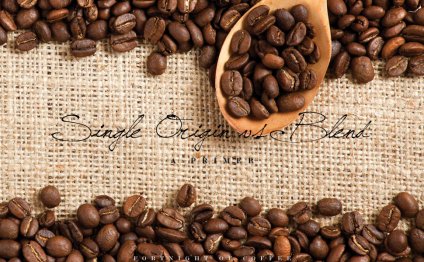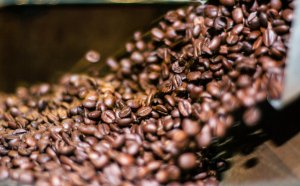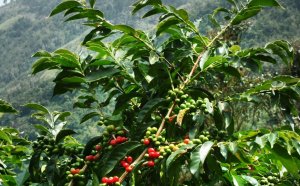
Coffee beans Origin

Coffee Origin Profiles
Coffee beans are not really beans but the seed of a cherry like fruit that is produced by a flowering shrub commonly referred to as a coffee tree. There are two main varietals of coffee trees, Arabica and Robusta, most of the specialty grade coffees sold today are from trees belonging to the Arabica family. Coffee trees grow in the equatorial zone all around the world and the best coffees are produced from countries that have rich volcanic soils and higher elevations. Raw unroasted coffee beans are typically green to yellow in color and commonly referred to as green coffee beans. The coffee roasting process is what brings out the rich brown colors that most people associate with coffee. Green coffee beans are shelf stable and if kept properly will last 6 months to one year. Roasted coffee on the other hand, tends to start going stale after about 10 days. Coffee can be roasted many different ways, from simple frying pans to fancy commercial roasters that can roast continuously.
There are many variables that will dictate how coffee will taste once it has been roasted. One of the biggest indicators of how coffee will taste is the region or country in which it is grown. Each producing region has unique conditions that influence the flavors of the coffee.
While these are not hard facts, in general coffees from the different producing regions have these characteristics;
The Americas
American coffees are grown all along the mountainous backbone of Latin America, from southern Mexico south through Central America, Colombia and Bolivia to Peru, as well as in the highlands of the larger islands of the Caribbean and on the high plateaus of Brazil. At their best, the classic coffees of Latin-American manifest bright, lively acidity and a clean, straightforward cup. They provide what for a North American is a normal good coffee experience.
 Within this very broad family of coffees, however, there are many variations in cup and character. The very highest grown coffees of Central America and Colombia tend to be boldly and intensely acidy and full-bodied. These are the coffees that attract coffee purists of the old school. Caribbean coffees, including the celebrated Jamaica Blue Mountain, tend at their best to be big-bodied and roundly balanced with rich, low-key acidity. The best Nicaraguan coffees are meaty and full-bodied. Lower grown coffees from Central America tend to be soft and round in profile, as are the often exquisitely sweet coffees of Peru.
Within this very broad family of coffees, however, there are many variations in cup and character. The very highest grown coffees of Central America and Colombia tend to be boldly and intensely acidy and full-bodied. These are the coffees that attract coffee purists of the old school. Caribbean coffees, including the celebrated Jamaica Blue Mountain, tend at their best to be big-bodied and roundly balanced with rich, low-key acidity. The best Nicaraguan coffees are meaty and full-bodied. Lower grown coffees from Central America tend to be soft and round in profile, as are the often exquisitely sweet coffees of Peru.
The character of the classic Latin-American cup derives, in part, from the clarity of flavor achieved through wet-processing. The coffees of Brazil offer a different world of experience based on a much wider variety of processing methods, from dry-processing, which produces the classic Brazil Santos cup, low-toned, spicily complex and rich, to semi-dry or pulped natural processing, which promotes a softly complex, delicately fruity cup, to classic wet-processing, which produces a cleanly understated, pleasingly low-acid cup much like the one offered by the finer lower grown coffees of Central America.
Africa and Arabia
Some of the world’s most distinctive coffees are grown in East Africa along a long north-south axis that starts at the southern tip of the Arabian Peninsula in Yemen and concludes in Zimbabwe in southern Africa, along the way encompassing the highlands of Ethiopia, Kenya, Tanzania, Zambia, and several less prominent origins.
These often remarkable coffees are characterized by a variety of striking floral and fruit notes, from the almost perfume-like floral and citrus character of Ethiopia wet-processed coffees through the intensely acidy and berry-toned Kenyans to the soft and voluptuously fruity Zambians. This family of coffees includes two of the world’s oldest and most traditional origins: the Harrar coffees of north-eastern Ethiopia and the coffees of Yemen, just across the Red Sea from Ethiopia. Both of these coffees are picked and put out to dry on rooftops, fruit and all, much as they were when coffee first came onto the world stage in the 17th century. Both display variations on a wild, complex, slightly fermented fruitiness that many coffee lovers find as seductive today as the first coffee drinkers of Europe did.
India and the Pacific
The best-known and most distinctive Pacific coffee origins are grown in the Malay Archipelago, that chain of often enormous islands that make up the nations of Indonesia, Timor and Papua New Guinea. These coffees include the deep-toned traditionally processed coffees of Sumatra, Sulawesi and Timor, with their complex fruit, earth, and musty notes. By contrast, wet-processed coffees of Sumatra, Java, and Papua New Guinea are bright and floral and may range from delicate to (in the case of some Papua New Guineas) intensely and fragrantly acidy.
RELATED VIDEO



Share this Post
Related posts
Where did coffee beans originate?
On a recent trip to Costa Rica with Contiki Travel, I took a tour of a coffee plantation. As an avid coffee enthusiast (okay…
Read MoreCoffee beans Wiki
Coffee varieties are the diverse subspecies derived through selective breeding or natural selection of coffee plants. While…
Read More










